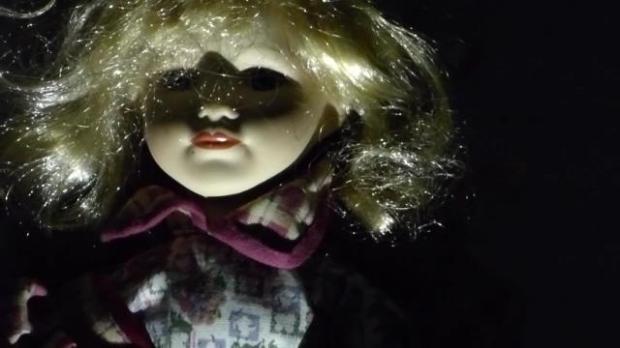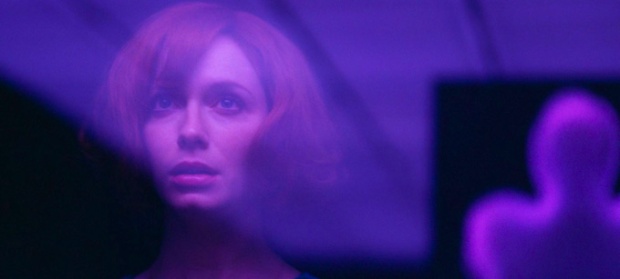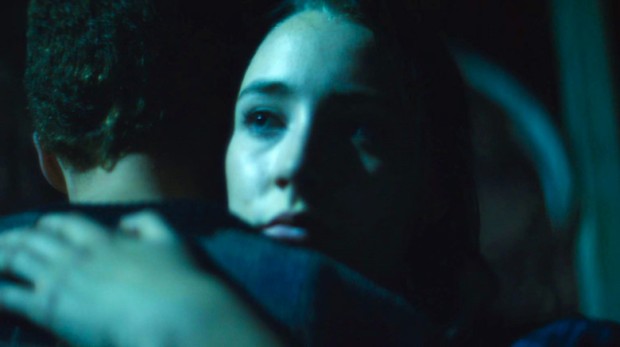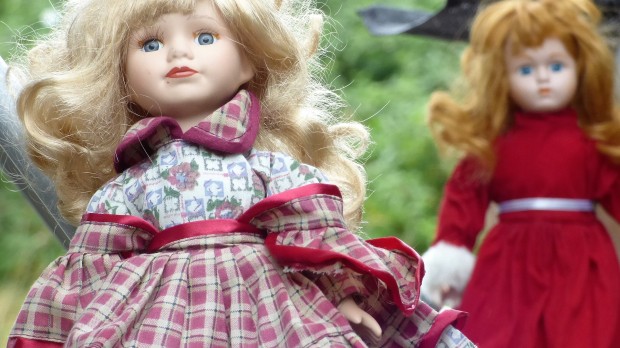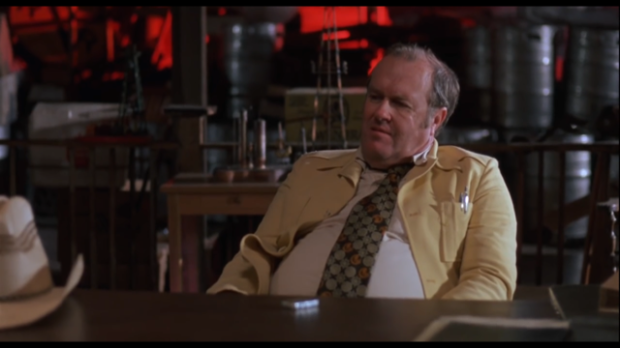Record two very short scenes (either a single shot or a maximum of four shots that edit together). Invent your own or pick from the list.
• A romantic dinner for two
• A depressed person alone at home
• Oh what a beautiful morning
• A stalker arrives
• A child takes its first steps
• Another mundane day at the office.
Before you start, clearly define the atmosphere you intend to create. Think about how you can use lighting, shade and colour to achieve this.
• Find a suitable location. Think carefully about available light and colour.
• Test how the light looks through your camera.
• Use additional materials to create desired colour and texture within the scene.
• Use reflectors and additional lights if they are available.
• Record your image(s) and edit them.
Upload your sequences to your blog along with notes explaining what you were trying to achieve.
Look at other students’ sequences and compare your techniques.
What works or doesn’t work? (Think about your own work, that of fellow students and other films you have watched.)
If budget, time and equipment were no issue, how would you change your sequences?
How important is lighting?
Atmosphere Example 1
For this exercise, I chose to use the stimulus “Oh what a beautiful morning” although I chose to make that read afternoon instead. I filmed a glorious summer afternoon, one that was slightly blustery, focusing on the trees and bushes in my back garden. There is a river at the end of my garden that heads across the road to the sea, one that is tidal and when the tide is high, so the river flows past with a serenity that I often enjoy simply watching. Our beach towels were drying on the washing line and this also added to the gently blustery scene. The last frame showed the man’s legs as he sat on the garden chair on the decking by the river bank with a cup of tea. On the tea mug is the motif “Best Dad in the World”, and I chose purposely to use this. A family man, relaxing in the sun, a symbol of contentment. Even leaving just his socks on, was intended – its a very “dad” thing to do! The diegetic sound is the wind sweeping through the reeds and bushes, an extremely soothing sound. Sometimes we hear wildlife, sometimes we can hear distant motor engines, we are not far from other human existence, after all.
I love the sight of the greens of trees and bushes next to the azure sky in the summertime, often takes me back to childhood memories of those seemingly endless summer holidays. Gathering this image was easy under the natural light and no other lighting was required, however I am aware that the camera settings I had selected resulted in some over-exposure.
I dont think budget issues really affects such a frame. The natural sunlight provided the desired capture, and I suppose just using better equipment and maybe a more glamorous actor ( alas, its me in the footage taken! ) would have been an obvious advantage.
Reflection:
I was adamant that I would await a slightly blustery atmosphere to the summer weather my area had been having. I enjoy those days the best, love listening to the sounds of the wind rushing amongst the many wild grass and trees that surround us. Often seagulls and motorboats are heard, but ironically were vacant at the time of recording. I recorded the sounds separately and dubbed them back on to the timeline, simply to afford myself to indulge on each task in hand.
A friend of mine who subscribes to my YouTube account, replied that the scene was incredibly relaxing, not knowing what the piece was for. Therefore, with “blind” feedback like that, it appears the intended mood was successful.
Atmosphere Example 2
In contrast to example 1, I opted for the stalker prompt. Filmed just after dusk, I used a child’s electric night-light to illuminate the room, giving off a nightly blue hue. Climbing through the window and marching across the room, up the stairs, across the landing and into the bedroom, where the lady is sleeping. She is seen in the foreground, waking up just as the stalker puts his hand on her shoulder. My girlfriend Catherine, kindly volunteered to play the the victim.
I used the night-lighting as the main source for most of the frames, but in the last shot, I used a mobile phone light to illuminate the lady, passing off as street light from outside. I tried various lights to recreate the desired effect. Torches, LEDs, laptop screens etc. Due to natural light being unavailable, it was fun to experiment with various light sources. I used a mirror to reinforce the light across the landing as there are no power-points to plug in the night light there, however sadly I feel that the light in that frame was too overpowering. Therefore, this appeared unnatural, unless the viewer imagines the use of night-lights, which is very unlikely. Upon hindsight, it would have been preferable to have shown the actual light source in the frame – a fundamental lesson in lighting, of course!
All audio, even though diegetic, were re-synched and dubbed on seperately. I enjoyed using this technique, as it gave me freedom to be creative, using a particular creaking stair to emulate floorboards across the landing, etc. Flexibility in time and budget would of course allow purpose built lighting and equipment, alongside further experimentation but I feel that the point of the exercise was to clearly define the action and atmosphere, which I do believe is still present.
Reflection:
I enjoyed working on this scene, especially working on the best way to light the frames. My girlfriend enjoyed simply having to lay in bed, at least. Most of what I had envisioned worked well, and despite a couple of setbacks trying to light the rooms efficiently, it did not take too long to capture.
Other students’ exercises:
Ashley had created two pieces based on ” a depressed teenager” and “a warm sunny day”. Immediately, I noted he had used music accompaniment, which even though the exercise never prohibited the use of this, I had avoided to do so, simply because I felt that the diegetic sounds in both of my examples would be better off without musical enhancement. However, on Ashley’s depressed teenager piece, despite a very melancholy looking facial expression and posture from his young actor, the choice of music allowed the intention to drive neatly to the point, successful in both versions of this example, I thought. It would be interesting to see what atmospheres other music would bring to mind, perhaps some punk or metal, or on the flipside, bluesy jazz, or techno, the list would go on. It was interesting to see in his warm sunny day exercise that he had experimented with a particular wild card music, Charlie Chaplin-esque , to differenciate how music can alter the mood.
I’m intrigued now as to how my “stalker” scene would work with some progressive jazz score, for instance.
Chloe chose a collection of moods covering her trip to the Lake District, which I would concur is a beautiful, atmospheric part of the country. She covered cosiness in the cafeteria, a torrential sleety downpour, the lakeside, peacefulness and then further rain. I found this a very interesting anthology of her day out. The moods clearly achieved. The final sequence of rain seen from inside the car with the frame occasionally interupted by the car windscreen wipers added that safe and dry sensation when looking at the rain whilst undercover. I felt particularly that this was effective.
Her other exercise based around her poorly sister, confined to her bed, watching her family outside in the sun, feeling sadness that she can’t join her. Effective again, allows empathy to the character, sadly unable to enjoy the warm sunshine.
Peter O


